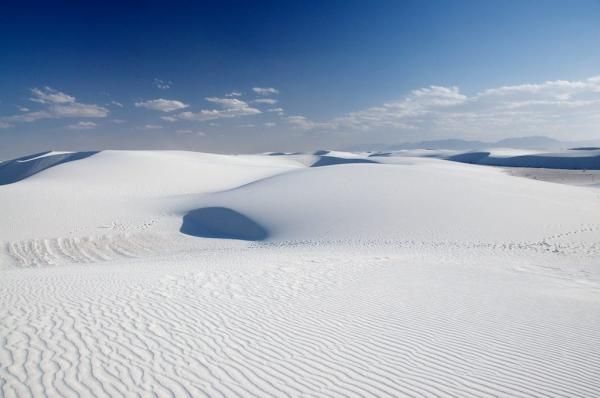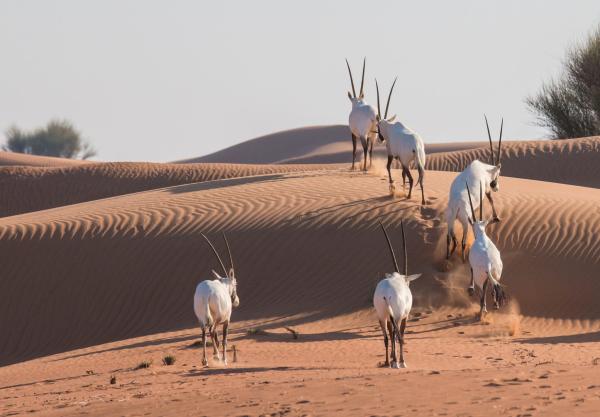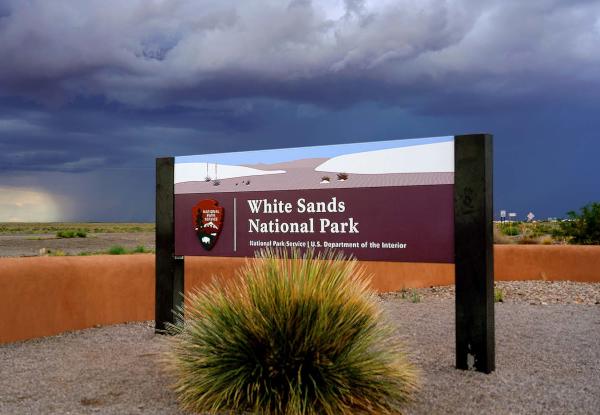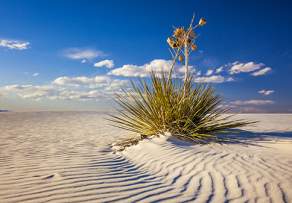5 Cool Facts About White Sands National Park
Imagine miles of sparkling white dunes that look like snow but feel warm beneath your feet. Welcome to White Sands National Park — one of the most breathtaking and unexpected landscapes in the U.S. From its otherworldly beauty to its one-of-a-kind geology, this New Mexico gem is full of surprises. Whether you're planning your next road trip or just love a good desert adventure, here are 5 cool facts that make White Sands a must-see destination.
Cool Fact #1
These Dunes Aren’t Made of “Regular” Sand
The “sand” that makes up these vast, shifting dunes isn’t ordinary silica sand like most inland sands. Instead, it’s almost entirely composed of gypsum—a unique mineral that dissolves easily in water, much like sugar or salt. When rain falls on the nearby mountains, it slowly dissolves layers of gypsum, carrying the mineral downhill with the flowing water.
Because the Tularosa Basin and its dunes form a completely enclosed system with no outlets for water, all the dissolved gypsum stays trapped here. Over time, it settles and builds the dazzling white sands that make this park so extraordinary.

Cool Fact #2
The "Sand" is not White and Doesn't Act Like Sand

Gypsum itself is actually clear, but the dunes look bright white—almost like snow—because the tiny gypsum grains are constantly rubbing and bumping against each other. This creates tiny scratches on their surfaces that reflect sunlight, giving the dunes their brilliant white glow.
Unlike typical silica sand, gypsum doesn’t absorb heat from the sun. That means even on the hottest days, the dunes stay cool and comfortable to walk on. Just be sure to visit outside the peak sun hours and bring plenty of water to stay hydrated.
Cool Fact #3
You can spot an Oryx
Another reason White Sands feels almost otherworldly: it’s home to a thriving population of African oryx. Native to the Kalahari Desert in East Africa, 93 of these striking antelope were released into the area between 1969 and 1977.
Today, their numbers have soared to over 3,000. Each oryx can weigh up to 450 pounds and boasts long, straight horns averaging 34 inches—giving them a regal, almost mythical appearance. Seeing these powerful animals roam freely across the brilliant gypsum dunes of White Sands only adds to the surreal beauty of the landscape.

Cool Fact # 4
You can ride, bike and play in the moonlight
Curious what to do in all this stunning sand? Take the Dunes Drive—an eight-mile scenic road that leads from the visitor center deep into the heart of White Sands’ glowing gypsum dunes. The 16-mile round trip takes about 30 minutes, but you’ll want extra time for hiking, photos, sand sledding, and exploring.
Choose from four marked trails for easy to adventurous hikes, or join a ranger-led tour to uncover the dunes’ secrets. Don’t miss the magical moonlight hikes and sunset tours—offered year-round—that transform the landscape into a glowing wonderland. Whether you seek adventure or relaxation, White Sands promises an unforgettable experience.
Cool Fact # 5
It’s a National Park, not a Monument. There is a difference!
White Sands was originally established as a national monument in 1933 and was re-designated as a national park in 2019. While national monuments protect specific landmarks or features, national parks focus on preserving nationally significant natural resources and landscapes. This change reflects the importance of White Sands’ vast gypsum dune field—a truly unique environment that supports a diverse ecosystem found nowhere else in the northern Chihuahuan Desert.
Beyond its dazzling white dunes, White Sands National Park protects the world’s largest gypsum dunefield, rare gypsum hearthmounds, and the globe’s most extensive collection of Ice Age fossilized footprints. With over 10,000 years of human history etched into its sands, the park offers visitors not only stunning natural beauty but also rich cultural heritage and unforgettable recreational experiences.




